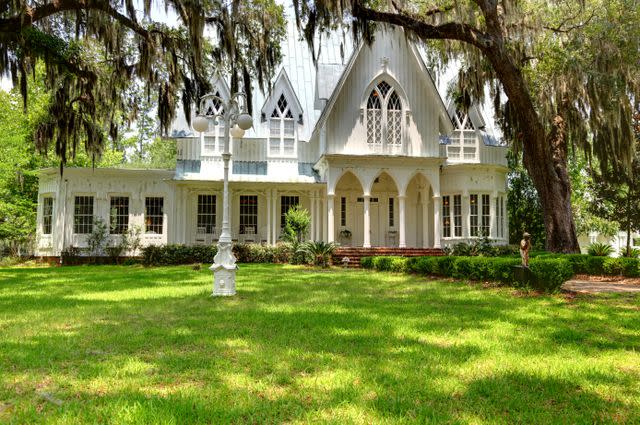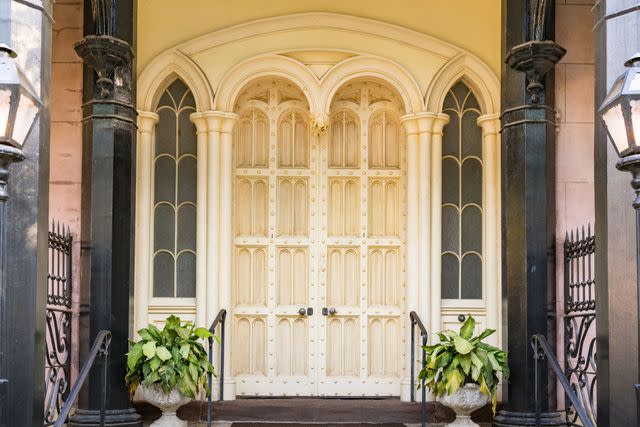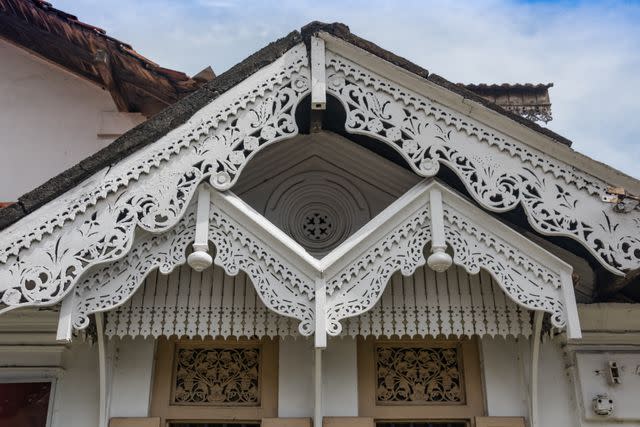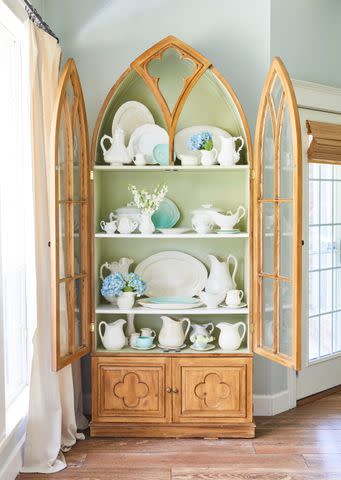Gothic Revival Architecture: Key Features and Design Ideas
While you might know this style by its ornate exterior details, inside it brings even more drama.
At first glance, Gothic Revival architecture might not seem like a warm and cozy style for your home. If visions of stone towers, pointed spires, and stained glass windows dance in your head, you’re not wrong, but there’s more to this bold style.
When it comes to residential applications, Gothic Revival architecture can feature wide, one-story porches, gingerbread details, and a definite draw to rural life. “Bay windows and cozy reading nooks, strongly influenced by medieval architecture, created unique and intimate spaces,” says Jill Steinberg, designer and co-founder and chief operations officer of Toronto-based wallpaper company Fine & Dandy Co.
Here, we unpack all the details on Gothic Revival architecture, starting with its history.

Getty Images / akaplummer
History of Gothic Revival Architecture
Gothic Revival architecture was inspired by medieval design, a definite departure from the Roman and Greek influence that had been the preeminent source of influence up until that point. The new-on-the-scene style was applied to churches and non-residential buildings like universities, though it was thought of as a more rural look when it came to homes, as the footprint didn’t quite mesh with the space constraints of the city.

Getty Images / pabradyphoto
Although it never hit the stride of Italianate or Greek styles, the Gothic Revival movement was popular residentially between 1840 to 1860 with wood varieties, known as Carpenter Gothic, being the most prevalent style. The architecture style continued to reign with churches throughout the 1940s, with its ornate details, high spires, and oftentimes castle-like towers being hallmarks.
While Gothic Revival architecture originated in England, it found a home in the United States, spreading from one side of the country to the other, though it remained most popular in the Northeast.

Getty Images / Malcolm P Chapman
Elements of Gothic Revival Style
If symmetry and balance were the keys in Georgian architecture, Gothic Revival took a decidedly different turn. Asymmetrical floor plans were popular and in no way was there a less-is-more approach. Pointed arched windows (oftentimes including one above the entry), ornamental bargeboards (or vergeboards), and cross gables all add to the can’t-miss style. “Distinctive arches, stained glass windows, pitched roofs, wooden ceiling beams, and dormers are all hallmarks of the Gothic Revival era,” says Steinberg.
Of all of its distinctive elements, the gingerbread engraved wooden trim (known as bargeboard) is perhaps the most identifiable feature of the style. However, Gothic Revival also brought with it other features that resulted in highly ornamental dwellings. Stained glass windows balanced the natural materials like wood and stone that also defined the style. The movement was all about drama and luxury, but it didn’t just stop at the exteriors. Gothic Revival interiors certainly have a style all their own, and one that mimics much of the impact and forms found on the framework of the buildings that call on this design.

Jason Donnelly
How to Decorate with Gothic Revival Elements
Although Gothic Revival architecture might be a bit harder to find if you’re looking to win one of these prized dwellings on the real estate market, you can certainly bring Gothic Revival elements into your own home. Steinberg says the key is to go for drama. “We recommend adding wallpaper that is rich in color and pattern for a dramatic Gothic-inspired moment,” she says. “Rich fabric in the form of brocades and tapestries can also add to a Gothic Revival-style interior.”
When it comes to paint colors, think dark and moody. Gothic Revival architecture brings drama, whether it’s through the distinct arches, towering spires, or simply in the interiors where ornate, moody patterns and colors saturate the spaces. To keep the aesthetic from skewing too dark, look for colors that are impactful but still add a dose of liveliness (think purples, blues, and reds).
Furnishings can also call on this style, whether it’s an ornate upholstered wood chair, elegant sideboard, or built-in bench seating with velvet upholstery (ideally situated in a bay window). Deep, dark wood with engraved details and flourishes that mimic the spires and arches of Gothic Revival architecture can be a unique way to draw on the aesthetic inside the home.
For more Better Homes & Gardens news, make sure to sign up for our newsletter!
Read the original article on Better Homes & Gardens.

